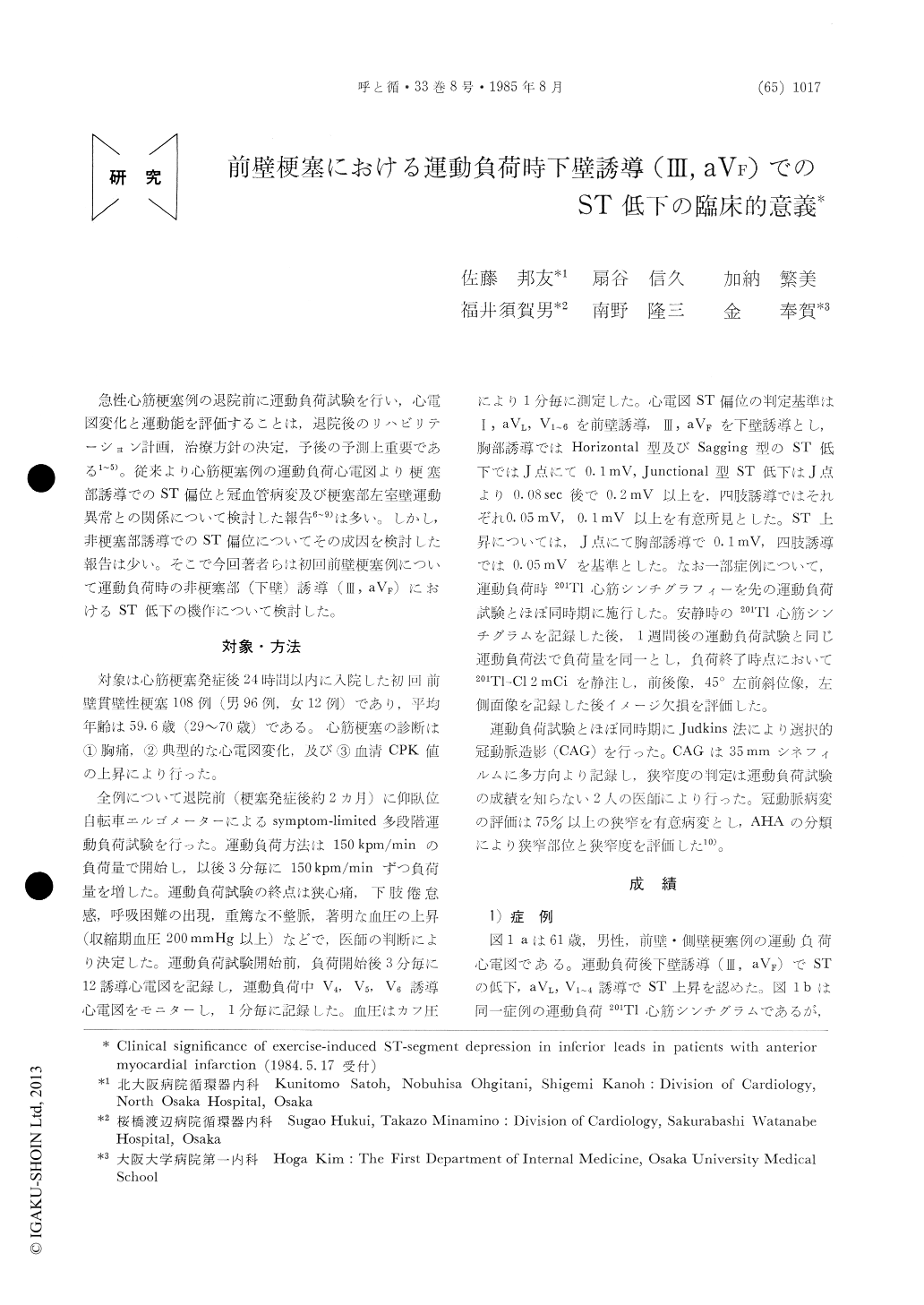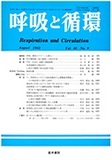Japanese
English
- 有料閲覧
- Abstract 文献概要
- 1ページ目 Look Inside
急性心筋梗塞例の退院前に運動負荷試験を行い,心電図変化と運動能を評価することは,退院後のリハビリテーション計画,治療方針の決定,予後の予測上重要である1〜5)。従来より心筋梗塞例の運動負荷心電図より梗塞部誘導でのST偏位と冠血管病変及び梗塞部左室壁運動異常との関係について検討した報告6〜9)は多い。しかし,非梗塞部誘導でのST偏位についてその成因を検討した報告は少い。そこで今回著者らは初回前壁梗塞例について運動負荷時の非梗塞部(下壁)誘導(III,aVF)におけるST低下の機作について検討した。
In order to evaluate clinical significance of exer-cise-induced ST depression (ST ) in inferior leads (III, aVF) in patients with first anterior transmural myocardial infarction (ML, 108 patients with an-terior MI were performed symptom-limited multi-stage exercise test in supine position using a bicycle ergometer about two months after the onset of MI. 12-lead ECG was obtained before and during the exercise test. CAG and LVG were performed by Judkins' technique.
Results : 1) 18 of 108 patients (44.4%) had ST↓, in leads III and aVF during exercise test, 56 (51.9%) no ST change (ST→) and 4 (3.7%) ST elevation (ST↑). 2) While no significant rela-tion of exercise-induced ST change to age, sex, exercise tolerance and rate pressure product at the endpoint of exercise test, 14 of 17 patients who hadchest pain during exercise test had exercise-induced ST↓.3) 19 of 18 patients (39.6%) with exercise-induced ST↓ had multivessel disease. On the other hand, 29 patients (60.4%) had single vessel disease (SVD) or no significant coronary artery lesion (OVD). 4) While only one of 39 patients with SVD or OVD who had ST ; in leads V1~6 had ST↓ in leads III and aVF, 20 of 21 patients (95.2%) with ST t in leads I or aVL had ST↓in leads III, aVF. 5) S of 20 patients who had ST→ in anterior leads had ST↓) in inferior leads. These patients had severe coronary artery narrow-ing in proximal portion of LAD.
These findings indicate that mechanism of ST↓in III, aVF were (1) coronary artery lesion of vessel related to inferior area, (2) reciprocal chan-ges of ST↑ in leads I, aVL and (3) ischemia around anterior infarct.

Copyright © 1985, Igaku-Shoin Ltd. All rights reserved.


